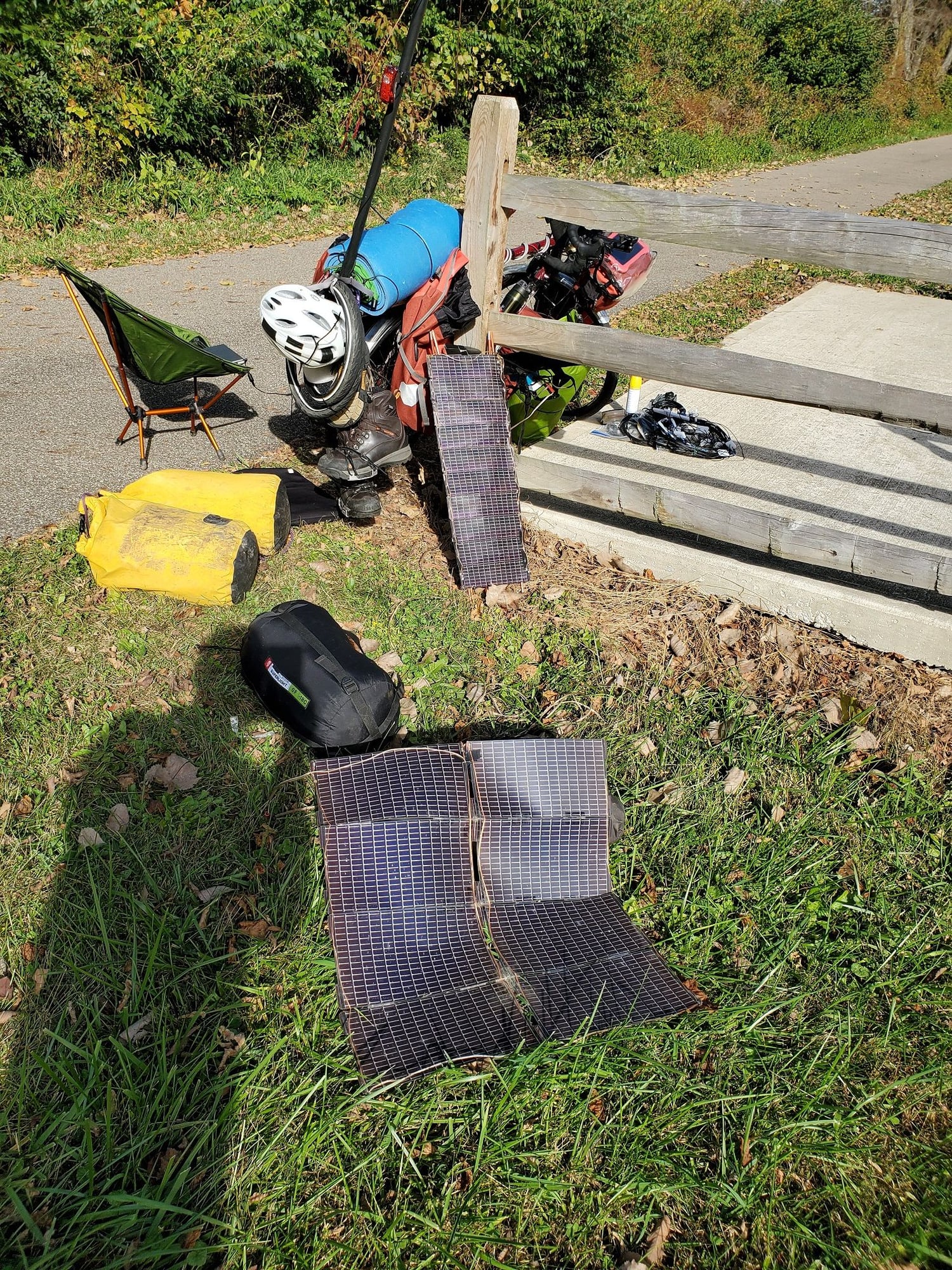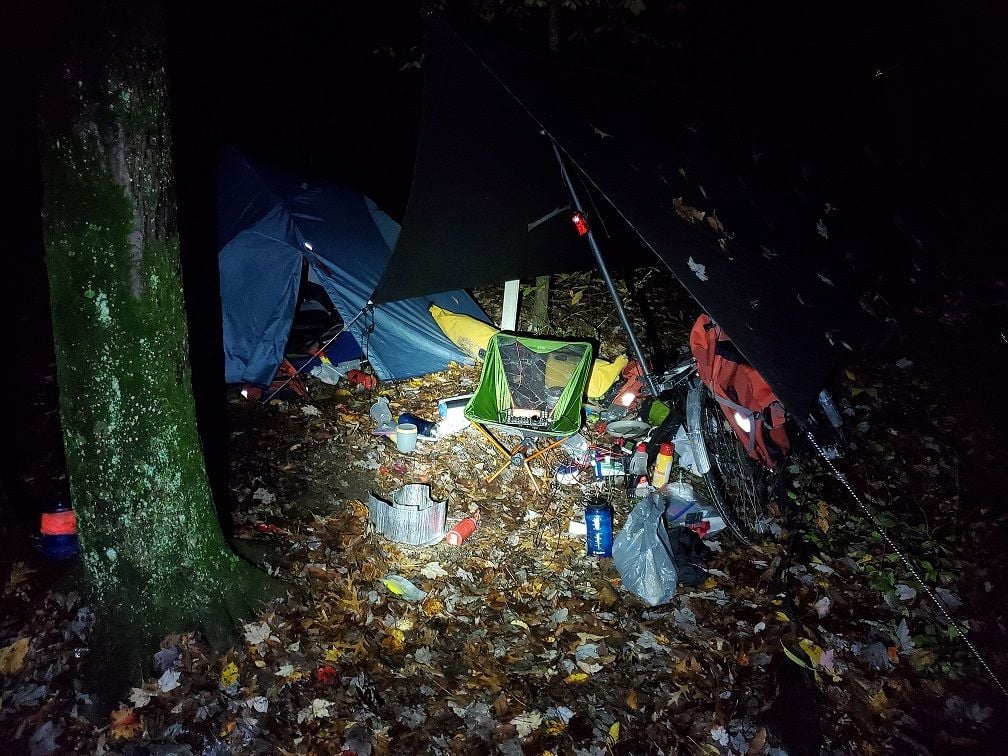Oh boy. Now you've opened a can of worms.

Originally Posted by
M Rose
Off topic again:
KC8QVO your screen name isn’t your callsign by any chance? If it is, KJ7MFV here, and this trip is actually going to be a SOTA run.
Yes on the call sign.
SOTA = "can of worms".
I have not done much in the way of SOTA adventures, but I do take radio gear with me. I just don't make it a point to go to high places and register for SOTA. I know a lot of people that do and would like to do it at some point, it just doesn't fit with my types of adventures the times I am out - I would have to make SOTA "the" adventure, as in the root/goal/main idea and my roots/goals/main ideas are not conducive to it.
That doesn't mean I can't enjoy some RF on-the-go.
Therein lies the "can of worms". By nature - if you are taking radio stuff with you then you are taking more with you than 95% of the people on this forum. If you are a light-weight traveler then you may be able to be on-par with the lower end of the weight spectrum of bikepacking loads. Then you are adding radio stuff so out goes your "light weight" packing. Yes, there are a lot of options to get radio gear down quite a bit in bulk/weight. However, no matter what you do you are going to have more "stuff" than someone that is not taking radio stuff.
By the way, I know a whole SOTA kit based off an Elecraft KX2 that is for sale (rig, battery, antenna, bunch of other accessories). If you would be interested (or anyone else here for that matter) shoot me a PM. The guy that is selling it changes gear more than anyone I know so I venture a guess the rig is not very used and like new. Edit: was recently sold.
On the subject of gear - here are some pictures to describe what my HF set up is. It isn't just "radio" - I have a conventional 12v power system for all my electronics - including 120v AC with a power inverter. The hard part - recharging. Solar works, somewhat. However, on this trip the day I had the solar panels set up was only 1 of 3 opportunities to get some sun over the whole 12-13 day trip (rain, mist, fog the rest of it). Of course, it being sunny was while I was trying to get some miles. So it was hard to stop and soak up sun with the solar panels and eat in to my miles for the day. That is one of those trade-offs that only you can make on-the-go and is something in my case that can dictate where I end up on a particular day. I am working on coming up with an idea to generate power off a wheel on, probably, a bike trailer. That way I can make power under-way and not only when stopped. With a bike trailer, also, I could rig up solar panels so it is conceivable I can get solar power on-the-go also (but the panels up would add drag acting somewhat as sails).
Panels combined are around 17-20 watts in full sun.

Rig is on the char (thats a Flex Chair from REI, by the way - fantastic chair so long as the legs don't post hole in soft mud or sand). Rig is an Elecraft KX3 - does 160-6m stock, added 2m so technically I don't need an HT, but I find an HT a lot more convenient for VHF/UHF operation - which I use on-the-go (the black mast in the picture above is a mount for a VHF/UHF HT antenna - and high mount for the flashy light you see).

Antenna is a jumper dipole. This one is made from 18g Silky Wire from The Wireman. It is the best portable antenna I've made. About 10 years ago I experimented with small speaker wire making a version of a jumper dipole. It worked extremely well and was very small/light. However, the speaker wire was sold copper and after some time of use I spent more time repairing broken wire than I did operating it. The 2nd version I made with 26 gauge Silky Wire. This worked for a few years. Then I got to thinking about Field Day and having a "do everything" antenna. So I bit the bullet and did up a bomb-proof version of the "jumper dipole". This one is made from 18g Silky Wire - extremely stout wire (Silky Wire is stranded copper clad steel - the tensile strength is ridiculous and it is still pretty soft and supple, with a tough teflon jacket so it doesn't get damaged and slides through trees). This version of the antenna covers all HF bands 6-160 meters. 40 and 80 are 2 segments - SSB and CW. 160 is 3 segments since the band is wide. It does need tuning stubs, which I have yet to make (I just trim it with a tuner - internal on the KX3, if I take it, otherwise I have a z11pro or a manual T tuner for my K2). When I built the antenna I used an analyzer on it (RigExpert AA-600) to fine-tune. However, environments and elevation can make a difference in the resonance - which is where the tuning stubs come in. Since I set the antenna up and tuned it at home I have never had the SWR end up right on the money when I've used it in practice.
On-the-go I use RG-174 (LMR-100). I swapped that out with RG-58 for Field Day this year, but it does add some bulk.
Last note on the antenna - the fixed segments you see below are 6-80m. I like to get on 75m a lot so it was important for me to have that band all the time. I separated 160m so that is removable and I can drop a lot of weight/bulk by not taking it along.

On the above trip I was able to talk to the group back home on 40m LSB with just a few watts. I started out at 1 watt and was able to get back to one of my friends for a while. He has a better equipped station. Then a few others chimed in and I went up to 3 watts to ease up their copy. That is with the antenna set up as a low inverted V. A balanced, resonant antenna can put out a good signal.
Always keep that in mind. The more signal you can get out with a smaller amount of power the less battery juice you will consume. Spent some time dialing in your antenna set up. What effort you put in to your antenna options will pay off in efficiency - your ability to work contacts on less power.
One last note on the radio gear - aside from the jumper dipole antenna (strapped to the outside) - the radio and accessories (for just the radio, not the power system) take up about 1/3 to 1/2 of one of my front panniers. The accessories ride in a quart size zip lock bag and the radio is stuffed in on the rack side of the pannier so stuff in the pannier can protect the front/controls.
Battery is a 12Ah LiFePo4 - the heart of the power system.
See my video below for a walk-through of everything. There is an electronics section that describes stuff more in depth - the timestamps for the sections are listed in the description below the video. Otherwise, it is a real long video.
Originally Posted by
M Rose
KC8QVO you make a lot of great points, the biggest take out for me was to make sure im doing this for the adventure and not the miles… and to tell you the truth, it’s about the adventure. If I only make it 1/4 of the way, and I gave it my all, I would be 100% satisfied as long as I had a good time doing it. If I didn’t have a good time, then why the heck not, plan better next time and do it all again.
Thats the right attitude to have. Only you know what kind of time you have. If you can give yourself somewhat unlimited time and have some plans for acquiring food and water - I say have at it. If you've been backpacking for a while then you likely have a pretty good leg up on what it takes to have/get food/water. You are going to consume a lot of calories while under human power - and even more calories when you stack in a lot of climbing. Are you going to pack that with you? Are you going to acquire it on-the-go? If you take it with you - at least for a good portion of the trek - where are you going to put it and how much does it weigh? In the back-country I find water usually fairly easy to come across so I can substitute weight of water with a filtration system (I use a Katadyn 10L gravity filter - its transformed my camp life enormously - as long as I have a water source I have relatively unlimited water for even a couple people - its as easy as filling the bag).
What I did before I did my 1st big trip last Fall (I did the Ohio to Erie route in 2 segments, see video above - #15 was the 1st, #16 was the 2nd) was I loaded up most of what I thought I was going to take and then did a test ride earlier in the week before I planned to leave. I did about 30 miles. The test ride was several things - it was testing of packing - how to get stuff on the bike. It was testing of bike handling, balance, etc. And it was testing of equipment/gear/parts. On that ride I did stop several times to tweak things. It gave me a big leg up on confidence in tackling the trip - the issues I did come across I was able to work them out close to home and the exercise of working out the issues was a confidence booster in being able to overcome challenges later on the trip. Aside from a broken major part I had everything covered for being able to keep on keepin' on - including a spare tire. There wasn't anything that broke, of note. I did have a couple flats and I broke my chain. But those are easy to deal with on-the-go so long as you have the stuff to do the repairs (like quick links for the chain and a chain tool).
Keep the ideas flowing and the planning going. And of course, get out and get some trips in - even if they aren't your "ideal" trip right off the bat. Build up to it.
I have another thread going in the utility forum on a trailer project, link below, if you're interested. At some point I want to build up a complete custom trailer. What I am messing around with right now is to experiment and try different things so when I get to doing my own design from the ground up I have a better base line of where to go with the design. It is the same theory as my test ride before my trip mentioned earlier - I can work out some things before I get to the final result.
https://www.bikeforums.net/utility-c...gth-frame.html